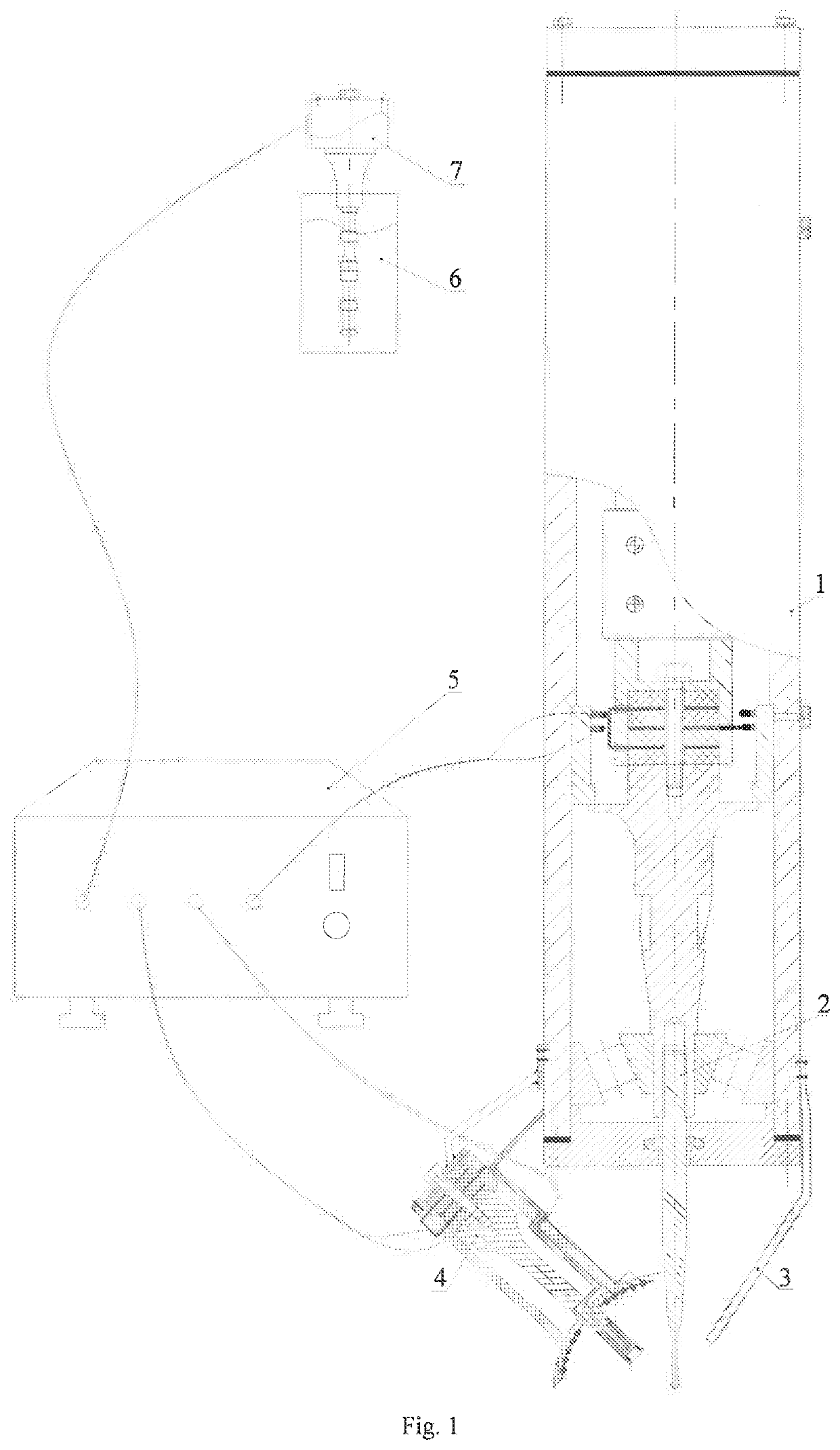Neurosurgical ultrasonic focusing assisted three-stage atomization cooling and postoperative wound film forming device
a three-stage atomization and ultrasonic focusing technology, applied in the field of neurosurgical skull grinding, intraoperative cooling and postoperative cooling, can solve the problems of increasing increasing the cost of grinding equipment, and increasing the cost of equipment, so as to reduce the bone grinding temperature, reduce the temperature of grinding, and enhance the convective heat exchange in the grinding zone
- Summary
- Abstract
- Description
- Claims
- Application Information
AI Technical Summary
Benefits of technology
Problems solved by technology
Method used
Image
Examples
Embodiment Construction
[0094]It should be pointed out that the following detailed descriptions are all exemplary and aim to further illustrate the present application. Unless otherwise specified, all technical and scientific terms used in the descriptions have the same meanings generally understood by those of ordinary skill in the art of the present application.
[0095]It should be noted that the terms used herein are merely for describing specific embodiments, but are not intended to limit exemplary embodiments according to the present application. As used herein, unless otherwise explicitly pointed out by the context, the singular form is also intended to include the plural form. In addition, it should also be understood that when the terms “include” and / or “comprise” are used in the specification, they indicate features, steps, operations, devices, components and / or their combination.
[0096]As described in the background, the prior art has deficiencies. In order to solve the above technical problems, the...
PUM
 Login to View More
Login to View More Abstract
Description
Claims
Application Information
 Login to View More
Login to View More - R&D
- Intellectual Property
- Life Sciences
- Materials
- Tech Scout
- Unparalleled Data Quality
- Higher Quality Content
- 60% Fewer Hallucinations
Browse by: Latest US Patents, China's latest patents, Technical Efficacy Thesaurus, Application Domain, Technology Topic, Popular Technical Reports.
© 2025 PatSnap. All rights reserved.Legal|Privacy policy|Modern Slavery Act Transparency Statement|Sitemap|About US| Contact US: help@patsnap.com



